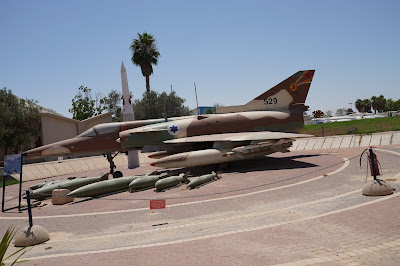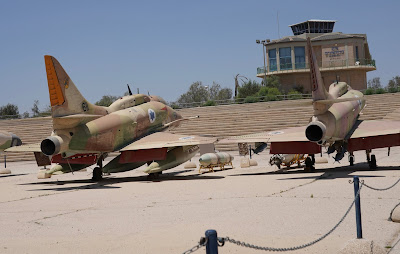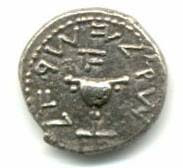The Israeli Air Force Museum also contains aircraft never used operationally by the Israeli Air Force.
The Israeli Air Force Museum happens to house a lot of MiG aircraft that were flown by their Arab state opponents and subsequently obtained by the Israeli Air Force.
The Mig-15
This Egyptian MiG-15 was shot down during the 1956 Suez campaign and retrieved from the sea.
The MiG-17:
This is one of two Syrian MiG-17s that happened to land by accident in 1968 at an Israeli air force base. Navigation was apparently not stressed sufficiently by the Syrian Air Force.
The MiG-19. Well, the tail of one anyways:
This particular MiG-19 was shot down during the Six Day War.
The MiG-23:
This Syrian MiG-23, similarly to the MiG-17, managed to land at an Israeli airbase in 1989 when its Syrian pilot decided to defect to Israel.
And the museum also houses the most famous MiG in Israeli hands:
MiG-21, number 007.
The MiG-21 was the front-line fighter of the Soviet Union and its allies in the 60s and 70s. The West badly wanted to obtain one to examine its flight characteristics and to prepare for dealing with it, whether in the slies of the Middle East or over Vietnam and elsewhere.
The Mossad launched Operation Diamond with the goal to obtain a MiG-21.
The Mossad was able to enlist Iraqi Pilot Munir Redfa, an Assyrian Christian, who agreed to defect, on condition that along with him and the MiG-21 that the Israelis get all of his family out of Iraq to Israel as well.
Munir Redfa then flew the MiG-21 from Iraq to Israel, and his family was successfully smuggled out of Iraq.
It was quickly renumbered as 007 in honor of how it was acquired and then flown extensively by Israeli pilots to examine and learn its strengths and weaknesses.
Once Israel obtained the MiG-21, it quickly shared both information about it and the aircraft itself with the United States, loaning the US the aircraft under the US Code named Have Doughnut program, which took place at the storied Area 51 base.
In 1988, an HBO movie, Steal the Sky gave a fictionalized and dramatized account of Operation Diamond and the defection of the MiG-21.





















































